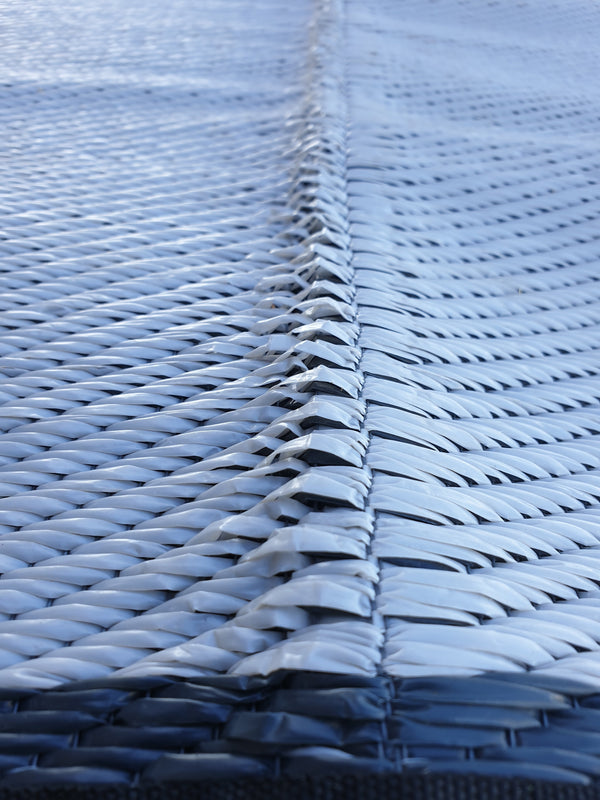Why Thicker Isn't Better: The Truth About GSM in Recycled Mat
May 13, 2025
After 15 years in the camping mat industry, we’ve seen it all—and we’ve learned what really works when it comes to recycled mats. One of the most common misconceptions? That thicker mats are better quality.
Let’s break that myth down and explain why more GSM isn’t always a good thing—especially for outdoor use.
🔍 What is GSM?
GSM stands for Grams per Square Metre—a measurement of fabric density. While it’s true that higher GSM can sometimes mean more durability, it can also mean extra weight, reduced breathability, and less practicality, especially in recycled mats.
❌ Why Thicker Isn’t Always Better
Here’s what happens when a recycled mat is made too thick:
- 🌬 Less Breathable: A thicker weave traps air and moisture, making it harder for sand and fine particles to fall through—defeating the purpose of a recycled camping mat.
- 🪶 Heavier to Carry: Increased GSM means more weight. This makes the mat harder to fold, carry, and store—not ideal when you're on the move camping.
- 💦 Slower Drying Time: Thicker mats take longer to dry, especially after rain or morning dew. In a country like Australia, where the weather can change quickly, quick-drying is a must.
- 🧹 Harder to Keep Clean: Because particles can't pass through easily, dirt and sand sit on the surface—meaning more time spent sweeping or shaking the mat out.
The Right Balance = The Best Performance
We’ve spent years testing and refining our mats to get the GSM just right. Our mats are:
- Thick enough to be durable and comfortable
- Lightweight enough for easy packing and transport
- Open enough in weave to allow sand and dirt to fall through
- Breathable and fast-drying, perfect for Australia’s changing conditions
When it comes to recycled camping mats, more GSM isn’t always more value. A mat that’s too thick will weigh you down—literally and practically. Choose a mat designed with the right density, the right function, and the right feel.



